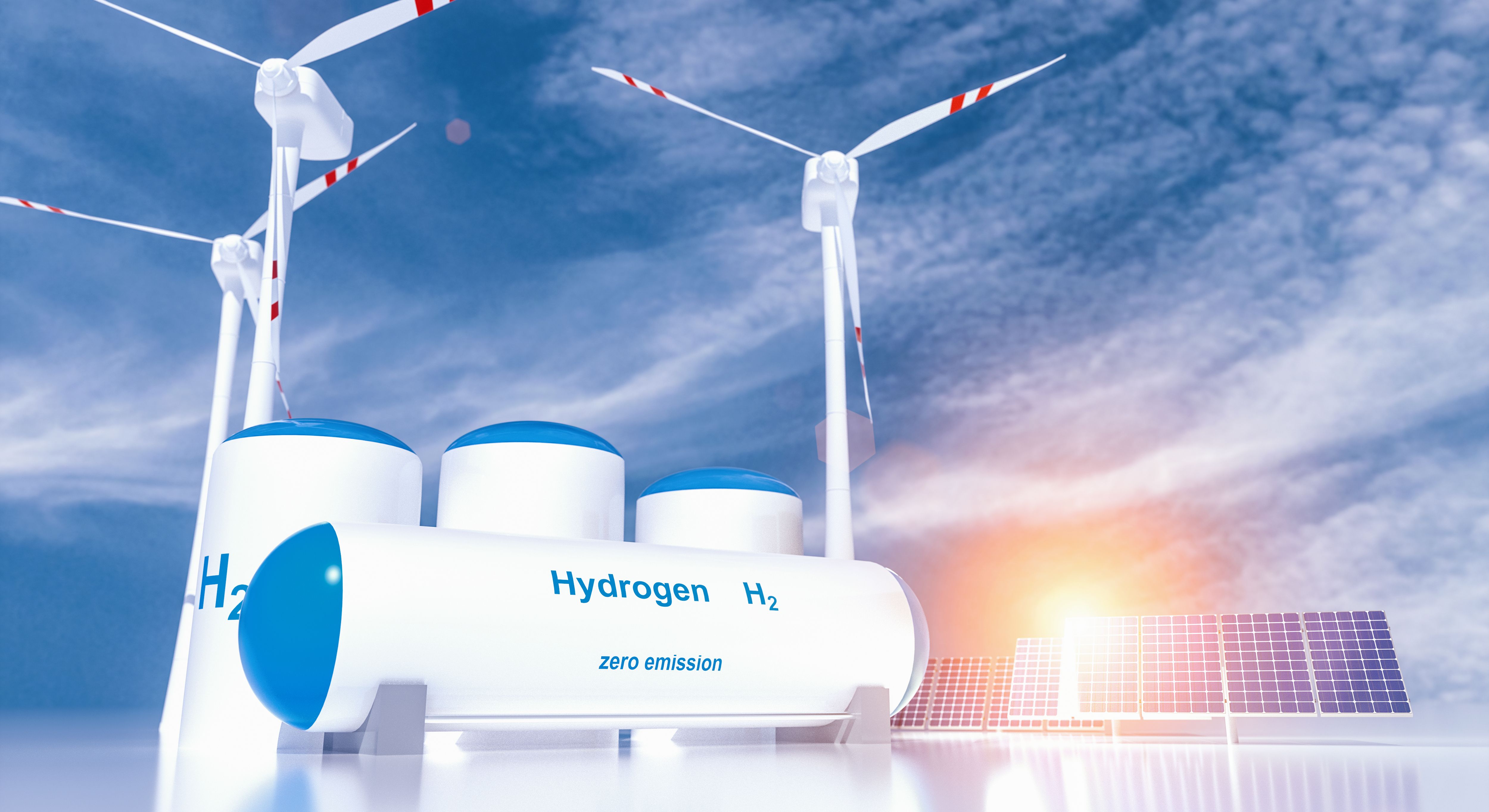The „Energiewende“ – the transition from a fossil-fuel reliant economy to an economy based on sustainable energy supply – is a goal shared by Germany and Jordan. Becoming less dependent on fossil fuels is to be achieved through enhancing and increasing renewable energy demand and supply and decreasing overall demand through energy efficiency measures. However, certain sectors, such as heavy industry or international freight are much harder to decarbonise. For these industries, “green” hydrogen, could become a viable option in the future. The Jordanian-German Energy Partnership creates awareness, fills knowledge gaps, and promotes innovation in the sector.
Green Hydrogen
Hydrogen exists as a colourless gas which is present in small quantities in the atmosphere. As an energy carrier, hydrogen is assigned different colour codes to indicate the resources and processes used to produce it.
In contrast to other types of hydrogen, so-called “green” hydrogen is produced through electrolysis powered by renewable energy. In this process, electrolysers split water (H2O) into its components hydrogen and oxygen. In addition to the infrastructure, hydrogen production thus only requires water and electricity. Nevertheless, the technology to produce green hydrogen on a large and competitive level only starts to be developed, making it still a rather expensive process.
Besides green hydrogen, there are other colours of hydrogen that are not considered sustainable. Here, most common are blue (electrolysis powered natural gas) also produced from fossil fuels with carbon capture techniques, grey (natural gas or methane), black and brown (black coal or lignite) and pink (nuclear power) hydrogen.
In order to develop a green hydrogen value chain, expanding renewable energy production and other large-scale investments up-, mid-, and downstream are required. Liquified hydrogen, for example, requires certain technically complex procedures to be transported – it must be stored at a maximum of -253 C°.
Nevertheless, replacing fossil fuels with hydrogen has been determined a key strategy for sustainable development by the International Energy Agency (IEA), the European Union, and some of the world’s biggest economies (both as importers and exporters).
Germany’s National Hydrogen Strategy
In recognition of the imminent need to reduce its carbon emissions, Germany has developed its National Hydrogen Strategy. This strategy aims at the expansion of green hydrogen production and import capacities. The country plans on using the resource as an energy source, energy storage medium, and in chemical processes such as the production of ammonia.
Germany will continue to be a net energy importer, meaning that it partially relies on future hydrogen production sites abroad. In October 2021, the Federal Government pleaded to invest up to 350 Mio Euro in foreign green hydrogen projects until 2024. Germany has developed a number of funding schemes for this purpose. They will help to establish hydrogen technologies, create the regulatory conditions for a large-scale hydrogen market, and support increasing hydrogen supply and demand. In October 2021, the country published its National Funding Guidelines for international hydrogen projects in non-EU countries. It has kick-started H2Global, an auction-based promotion of international green hydrogen projects which started by the end of 2021. Finally, the country plans to establish H2UPPP, a project which will provide supporting services to small private-sector projects that are piloting the use of hydrogen in partner countries of Germany.
Hydrogen in Jordan
Jordan has a vast amount of solar and wind energy potential, thus utilizing these clean energy sources to facilitate the production of green hydrogen is a promising path for the country. Besides that, its mature chemical industry provides the expertise and infrastructure to develop hydrogen production. Additionally, the green hydrogen value chain will create jobs and revenue through export and decrease Jordan’s dependency on energy imports. Therefore, it could have a significantly positive effect on Jordan’s energy security. The EU’s emission reduction targets set Europe on an ambitious path to become the first carbon-neutral continent, ultimately affecting its trading partners. In light of the EU’s political commitments and goals to cut carbon emissions, exporting green hydrogen to European countries presents several opportunities for achieving the desired climate targets and realizing new sources of income for Jordan. Reducing fossil dependence and a transition to green hydrogen will allow Jordan to meet its commitments under the Paris Climate Agreement.
The country’s biggest challenge in this regard is its severe water scarcity – a problem likely to be addressed through sea water desalination and water efficiency projects in the future.
What we do in this sector:
- Feasibility studies on Jordan’s hydrogen potential to create a Green Hydrogen Strategy and pave the way for new investments
- Development of a Pan Arab Hydrogen Strategy for the League of Arab States (LAS); supporting the emergence of green hydrogen as a new energy commodity for the LAS in line with its energy diversification strategies
- Preparing a hydrogen business guide for selected Energy Partnership countries
- Provide expert insight on certification, regulation, and provide capacity building for green hydrogen through the Global PtX Hub.
- Support grey hydrogen consumers and producers in Jordan’s industry to develop projects to switch to green hydrogen production through the H2PEP programme
Read more:
Start - PtX Hub (ptx-hub.org)
BMWK - Overview of the core elements of the funding guideline to support the international establishment of generating installations for green hydrogen




